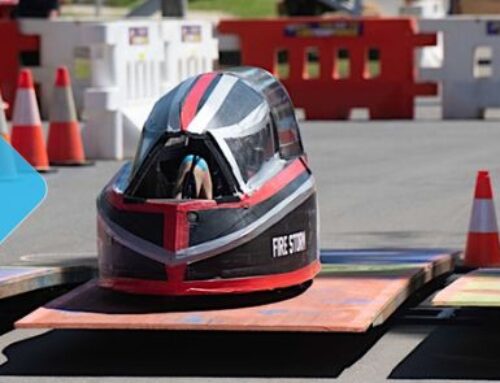Welcome to the start of Term Three! We hope that your team’s preparations are progressing well. Each year, the RACV reviews the rules and specifications and considers whether changes can be made to improve safety and reduce the risk for participating students.
Each year, the RACV reviews the rules and specifications and considers whether changes can be made to improve safety and reduce the risk for participating students. For 2017, one area of focus was improving the positioning and mounting of seatbelts in Human Powered (HPV) and Energy Efficient Vehicles (EEV).
The relevant 2017 HPV and EEV Specifications from the Handbook:
Note that changes for 2017 are highlighted in blue and underlined.
4.6 Seat Belt4.6.1 Type
Suggested supplier: Hemco Industries – http://www.hemco.com.au/ or Ph: 1300 065 057 APV Safety Products: 4 point, 2-inch webbing available through most automotive parts stores. 4.6.2 MountingThe seat belt must be mounted to a major, non-moving, structural member of the vehicle. Seat belts are not permitted to be mounted to the seat under any circumstances. Upper belts mounted behind the rider’s shoulders are required to be horizontal or no more than 40 degrees from horizontal and mounted no more than 200mm apart so as not to allow the belt webbing to fall from the shoulders when riding.
4.6.3 PositioningThe correct and safe positioning of the belts and catches can be found in the Australian Design Rules (ADRs) for motor vehicles. This means seat belts must:
|
What have been the concerns?
These new seat belt rules have resulted in some strong reactions from teams.
Three main concerns have emerged from our discussions with teams who have been working to update their vehicles:
- The impact on adjustable seats.
- The distinction between the surface the rider sits on and any framing that supports that surface.
- The interpretation to apply when the seat is made of a composite material such as carbon fibre.
In this post, we seek to address each of these concerns and provide clarity as to what scrutineers will be looking for at the event in November.
If you have any questions or queries as to how your vehicle may or may not need to be modified, please do contact us for support.
1. The impact on adjustable seats
Why do people use adjustable seats?
Many teams use adjustable seats and this is encouraged and understandable given the significant differences in the height of the riders within teams. It is not unusual to have riders over 180cm and under 150cm in the same team. The challenge for teams is to design for these differences and ensure that ALL riders are safe.
One of the main challenges in catering for the different rider heights is the fitting of the seat belt. No matter what the height of the rider the seat belt must comply with rule 4.6.3 regarding positioning. This rule states that seat belts must:
- Be worn over the shoulders and down the chest, to a low lap belt across the pelvis.
- Be adjusted to be as firm as possible on each rider and fitted to ensure that the seat belt remains properly adjusted on each rider at all times.
- The lap belt should be tightened before the shoulder belts so that the lap belt remains in the correct position.
The Issue:
Whilst riders may present in a way in scrutineering that meets rule 4.6.3, it is clear from observations during the Trial that in many cases the seat belt does not hold in this position. This is a major concern that we need to address.
The Preferred Solution:
The lap belt can be mounted to the base frame of the seat and travel with an adjustable seat provided there is a substantial metal to metal link using suitable mounting bolts between the seat belts metal anchor plate and the metal seat frame.
In this instance, the seat runners become the weak point and the seat runners must be up to automotive standard and be securely bolted or welded to the vehicle frame.
The seat belt shoulder straps are not permitted to be mounted to an adjustable seat and must be mounted to the vehicle frame.
2. The difference between the seat and any framing that supports the seat.
A number of teams have requested clarification between the seat (the surface the rider sits on) and the frame that supports that seat.
The scrutineers are referring to the seat in two parts:
- the seat base that the rider is sitting on, and
- the backrest or squab on which the rider rests.
Teams use a range of materials from plastics, fabric, metal and composite materials for the rider to sit on.
The preferred solution:
The strength of any seat frame and the quality of the mounting of the seat to this frame is what will be assessed by scrutineers.
The seat belt – in particular, the shoulder straps – should be attached to the vehicle frame and not the seat itself.
3. The interpretation to apply when the seat is made of a composite material such as carbon fibre.
Why do teams use composites?
A number of teams construct their vehicle frames and seats using composite materials such as carbon fibre, Kevlar and fibre glass. These materials are lightweight, strong, moldable and for items such as seats can be shaped for rider comfort and provide stiffness to the entire vehicle.
The Issue:
Composite materials must NOT be drilled for mounting the seat belt as this can lead to weakening the entire seat structure.
Preferred Solution:
If the lap seatbelt is mounted to the seat, the mounting point must be either:
- Bolted directly to the seat runner or metal seat frame.
- Bolted to a metal bracket that is structurally linked to the seat frame.
- Attached to a mounting point that is part of the seat strengthening ribs formed during seat construction, or integral with the seat moulding or composite layup.
- Attached to a mounting point created or formed in a composite seat during construction as outlined in the following diagram.
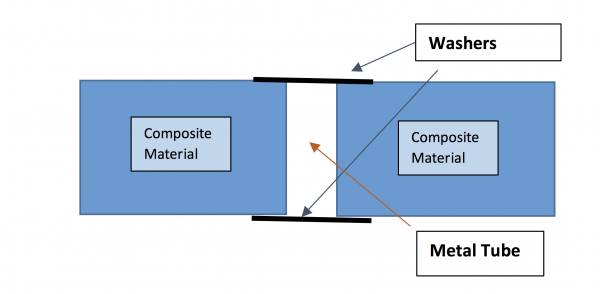
NOTE: Vehicles that complied with point 3 above and passed scrutineering at previous Energy Breakthrough events will be considered acceptable in 2017.
How will this rule be interpreted in 2017?
As highlighted in rule 4.6.2, the mounting of the seat belt is critical to ensuring that it provides the rider with full protection. The following diagrams are designed to help:
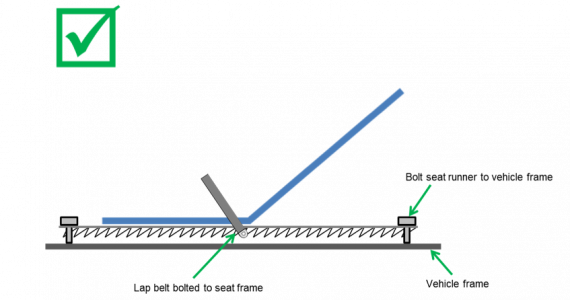
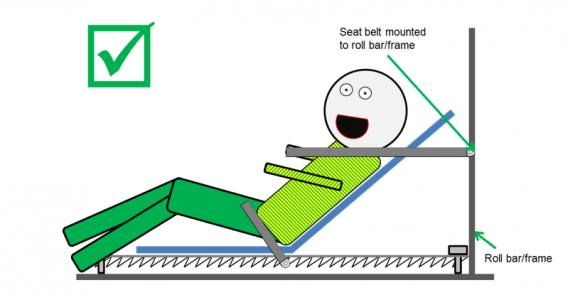
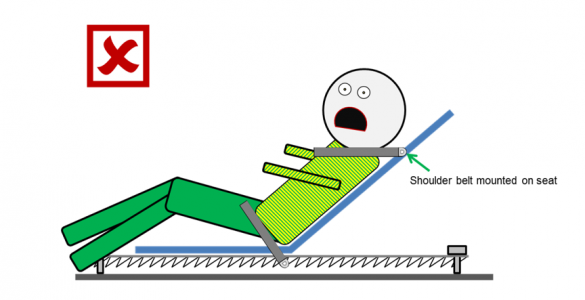
Summary / Overview
| Seat Belt – Shoulder | Shoulder belt mounts must be:
|
| Seat Belt – Lap belt | Lap belt mounts may be:
|
| Composite Materials | Composite materials must NOT be drilled for mounting the seat belt as this can lead to weakening the entire seat structure.
If the lap seatbelt is mounted to the seat, the mounting point must be either:
|
If you have any questions or queries as to how your vehicle may or may not need to be modified, please do contact us for support.





